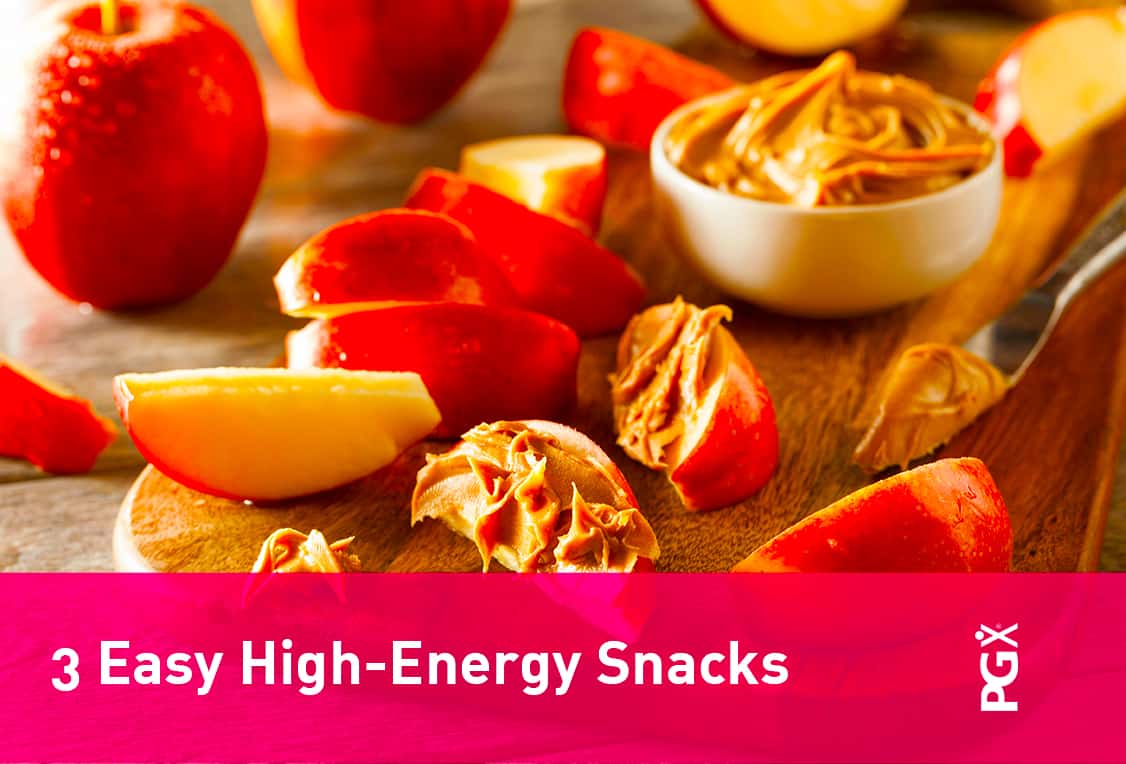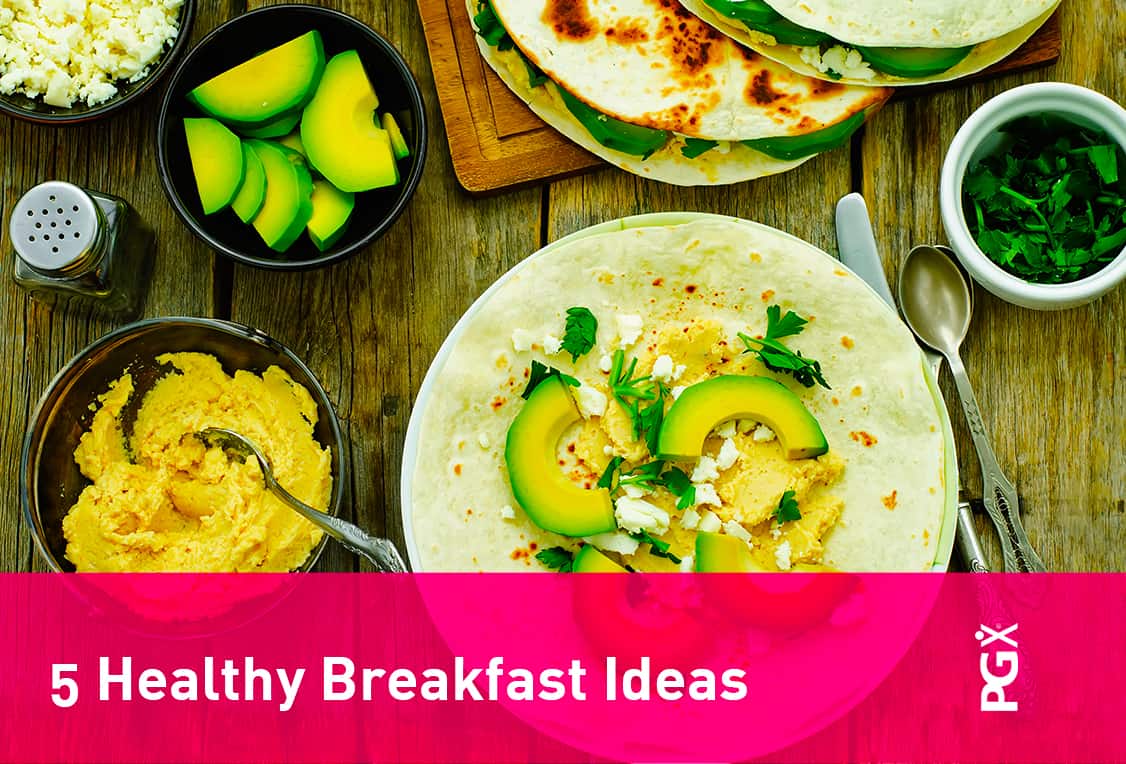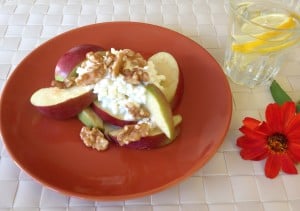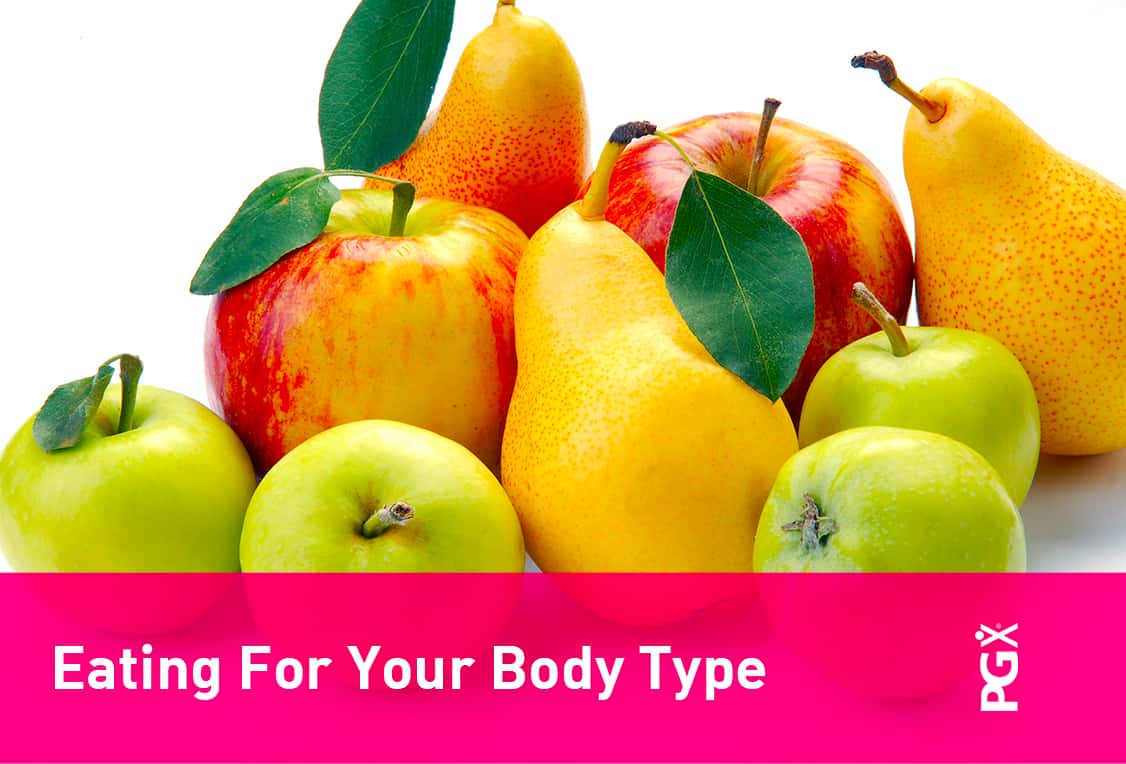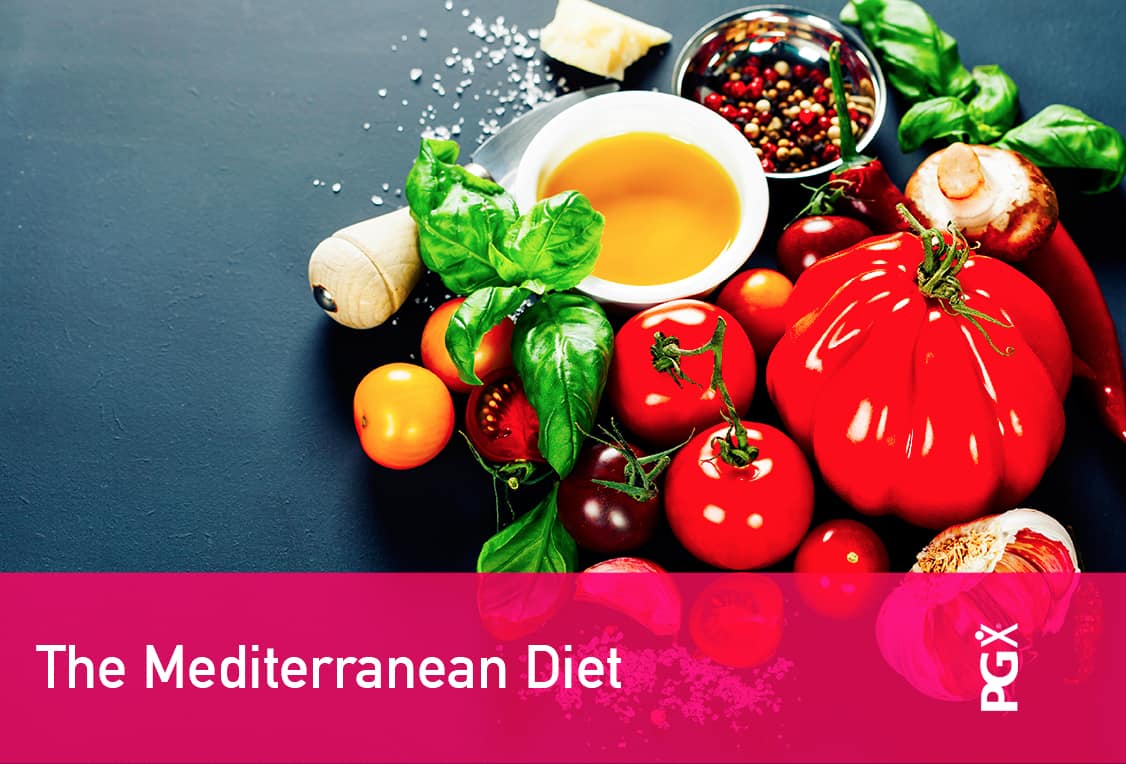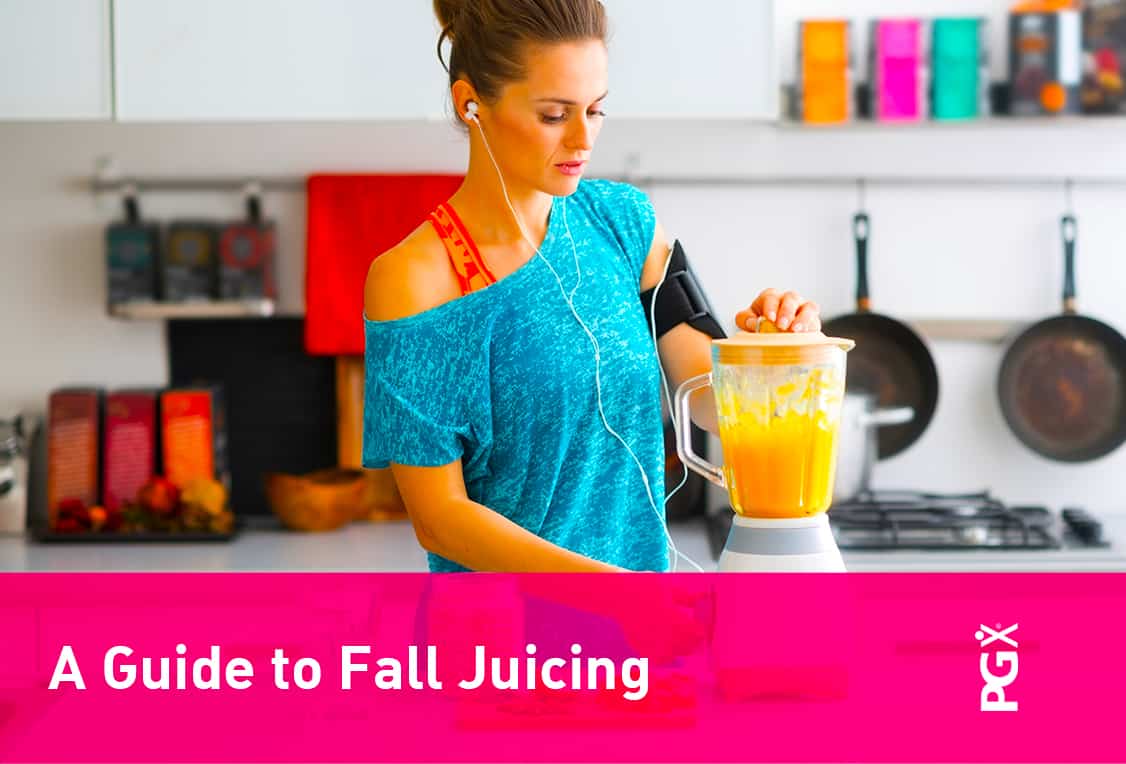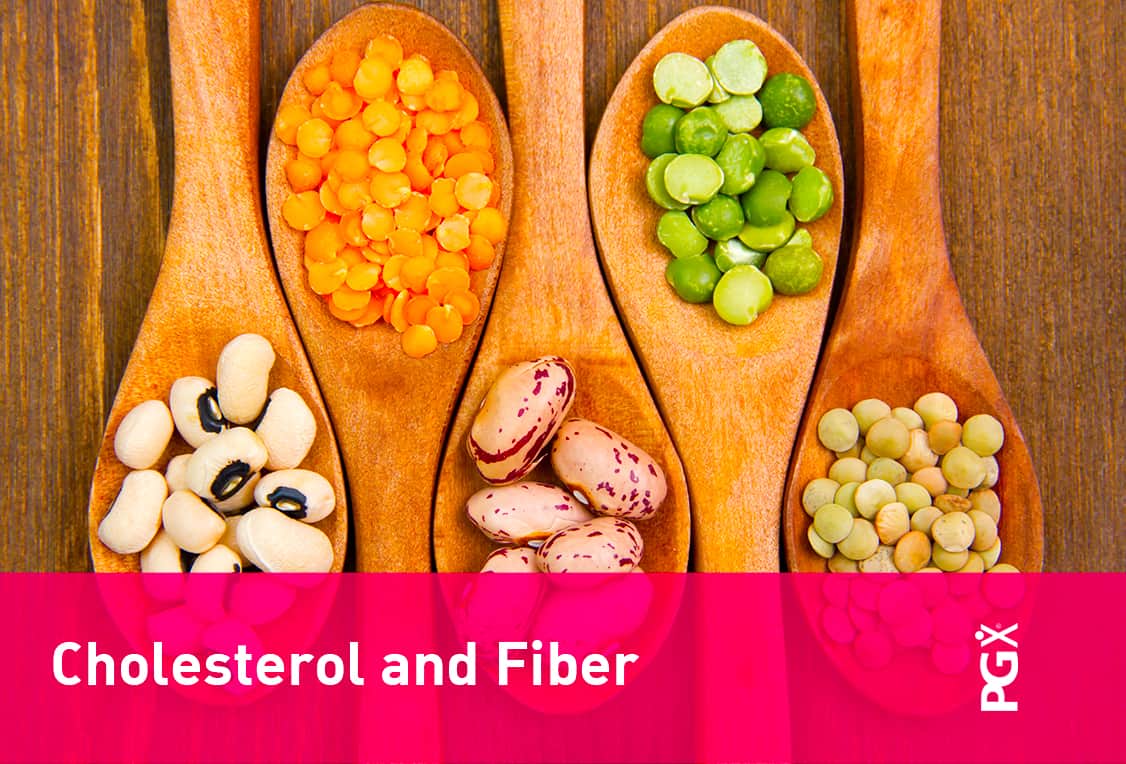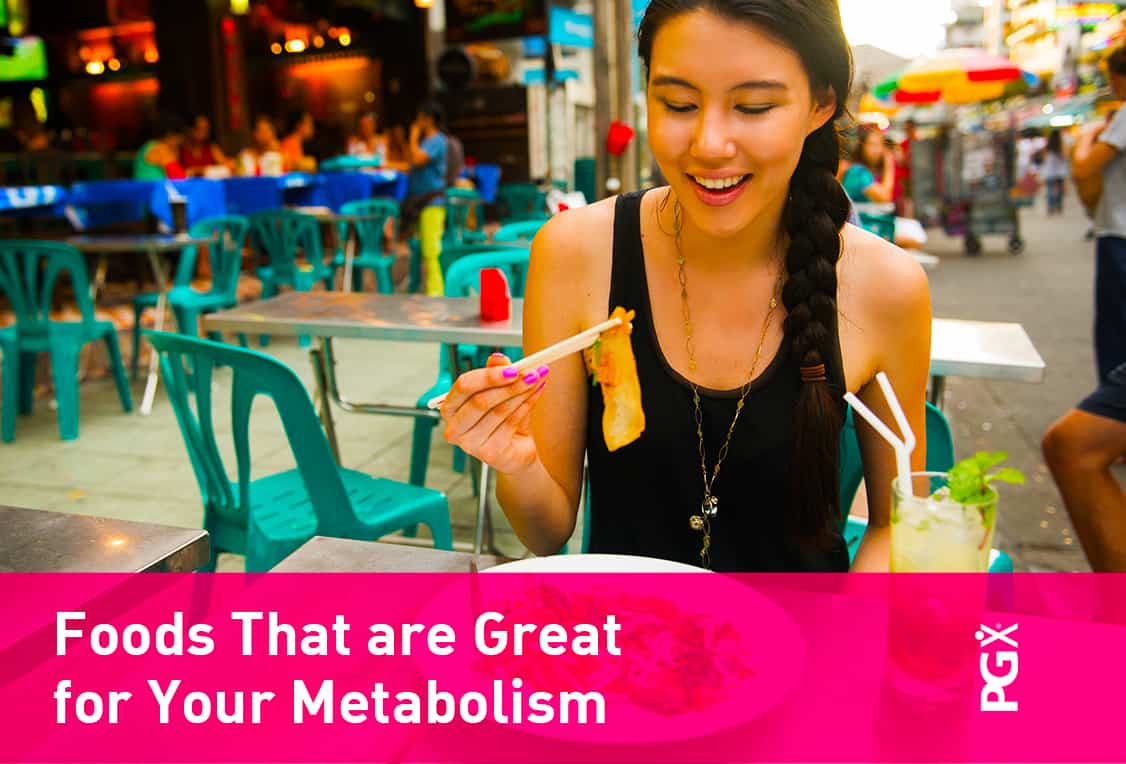While energy drinks and coffee can give you a boost when your get up and go has gone, you’re really just running off ‘borrowed’ energy rather than sound nutritional choices that will nourish your body.
High-sugar snacks devoid of fiber, protein, healthy fats and other nutrients are also just a recipe for an energy low. So, when choosing high-energy foods, opt for snacks that provide a ready source of energy along with a wealth of nutrients to help you metabolize your snack and stay healthy.
Here are three high-energy snack ideas that are easy to prepare:
1. Nut Butter and Apple Slices
One of the easiest ways to stock up on fuel is to slice up an apple and load each portion with peanut, almond, or cashew butter. Apples are a rich source of simple carbohydrates, but they also contain plenty of fiber to help maintain blood sugar levels already in the normal range. Team the fruit with a good source of protein and fat – like your favorite nut butter! – and you’ve got a nutrient-rich snack for the whole family.
2. Overnight Blueberry Oats
If you’re busy as a bee, don’t even think about skipping breakfast! Make overnight blueberry oats and start your day with a burst of energy and antioxidants. It’s easy:
- 1/2 cup fresh or frozen blueberries
- 1 tablespoon of applesauce or mashed banana
- 1 tablespoon of chia seeds
- 1 teaspoon of cinnamon powder
- 1/2 cup of oats
- 1 cup of soy, almond or rice milk (or coconut milk for added luxury!)
Add all the ingredients into a mason jar and with the lid placed firmly on, give it a good shake to mix everything up. Refrigerator overnight. In the morning, grab your jar and a spoon and take your healthy breakfast to go!
3. Ginger-Date Energy Balls
Date-based energy balls are far and away my favorite high-energy snack. Easy to make in advance and customize, I often make Mason jars full of these as gifts for all the busy-bodies in my life. It’s best to use Medjool dates as these are naturally softer and easier to process. If you choose to use harder dates, soak them in warm water for about 15 minutes and drain and chop them before adding to the food processor.
The recipe below includes blackstrap molasses to boost iron intake, cinnamon to support healthy blood sugar regulation, and almonds as a source of protein, calcium and healthy fats. Add in some fresh ginger, traditionally used in Ayurvedic medicine for its warming effects and to support digestion.
- 2 cups almonds or cashews (raw, unsalted)
- 1 cup Medjool dates
- 2 tablespoons blackstrap molasses
- 1 teaspoon fresh ginger (grated or minced)
- 1 teaspoon ground cinnamon
- 1 teaspoon vanilla
- ¼ teaspoon sea salt
- Shredded coconut or ground almonds (for rolling to coat)
To make the energy balls, add all the ingredients to a food processor and blend until smooth. Scoop out enough dough to form a bite-sized ball and roll it on a sheet of baking parchment before rolling it in shredded coconut. Store the balls in the refrigerator, using parchment to stop them sticking together, or freeze them for later use.
To add further punch to these high-energy snacks, try adding in a scoop of PGX protein powder* to your oats and energy balls for a slow release of fuel (and a little extra support for those muscles when moving heavy boxes!).
*Drink additional water (8 fl. oz.) after ingesting PGX®. If you are taking medications, take one hour prior to or two hours after taking PGX®.
† This statement has not been evaluated by the Food and Drug Administration. This product is not intended to diagnose, treat, cure or prevent any disease.

